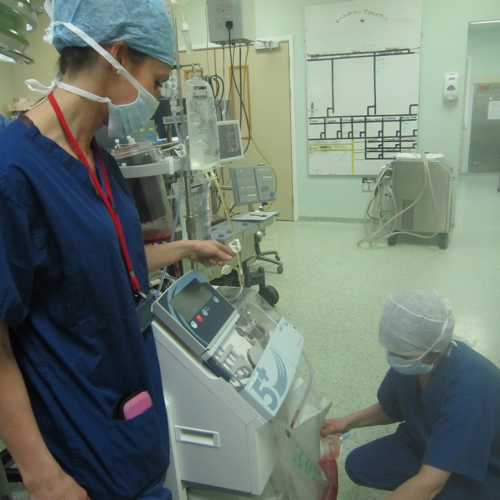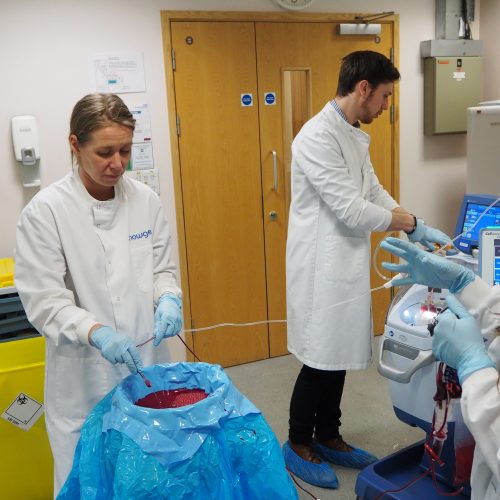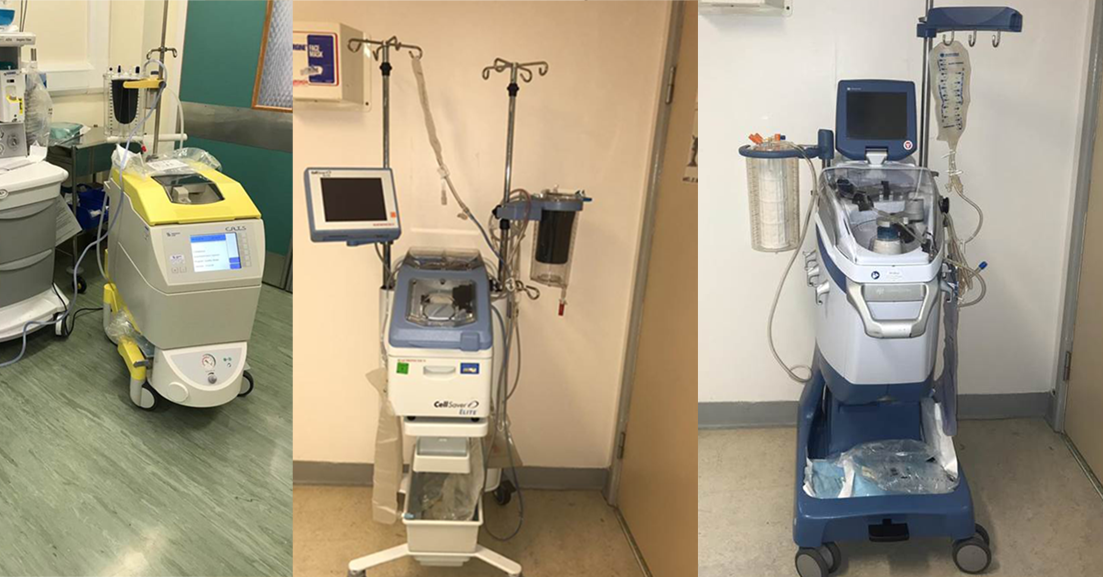Intraoperative cell salvage is the collection of a patient’s own blood lost during surgical procedures. The blood is then collected in a reservoir, washed and the red cells are infused back to the patient.
There are several companies who supply cell salvage machines, they all have the same basic components; a table line, bowl set, reservoir and waste bag. The shed blood is collected into the reservoir, a centrifuge spins, separates and retains the red blood cells. The supernatant is then discarded into the waste bag. Once the red cells are washed, they are transferred into the reinfusion bag. The reinfusion bag will contain red cells suspended in IV saline ready for administering into the patient.
Cell salvage is used when patients are having a surgical procedure and a significant blood loss is expected, (about 20% or 1 litre or more). It can be used in a variety of operations for example, cardiac, vascular, maternity, orthopaedic and trauma. The blood collected must be ‘clean’ blood with no contamination such as infection, bowel content or bone chips.



